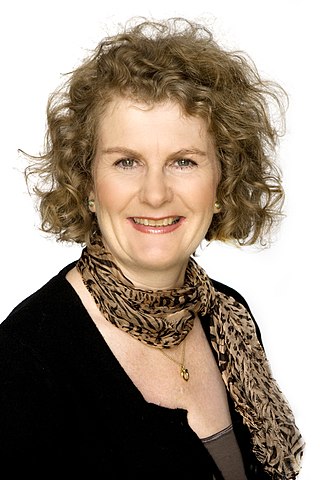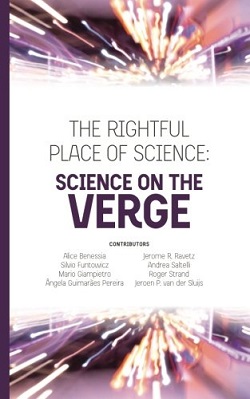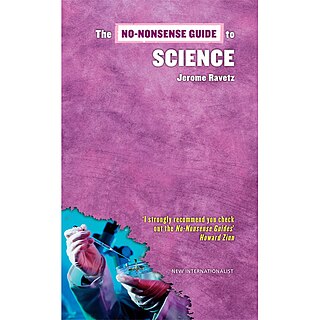
Nature is a British weekly scientific journal founded and based in London, England. As a multidisciplinary publication, Nature features peer-reviewed research from a variety of academic disciplines, mainly in science and technology. It has core editorial offices across the United States, continental Europe, and Asia under the international scientific publishing company Springer Nature. Nature was one of the world's most cited scientific journals by the Science Edition of the 2022 Journal Citation Reports, making it one of the world's most-read and most prestigious academic journals. As of 2012, it claimed an online readership of about three million unique readers per month.

Human ecology is an interdisciplinary and transdisciplinary study of the relationship between humans and their natural, social, and built environments. The philosophy and study of human ecology has a diffuse history with advancements in ecology, geography, sociology, psychology, anthropology, zoology, epidemiology, public health, and home economics, among others.
The ecological footprint measures human demand on natural capital, i.e. the quantity of nature it takes to support people and their economies. It tracks human demand on nature through an ecological accounting system. The accounts contrast the biologically productive area people use to satisfy their consumption to the biologically productive area available within a region, nation, or the world (biocapacity). Biocapacity is the productive area that can regenerate what people demand from nature. Therefore, the metric is a measure of human impact on the environment. As Ecological Footprint accounts measure to what extent human activities operate within the means of our planet, they are a central metric for sustainability.
Public awareness of science (PAwS) is everything relating to the awareness, attitudes, behaviors, opinions, and activities that comprise the relations between the general public or lay society as a whole to scientific knowledge and organization. This concept is also known as public understanding of science (PUS), or more recently, public engagement with science and technology (PEST). It is a comparatively new approach to the task of exploring the multitude of relations and linkages science, technology, and innovation have among the general public. While early work in the discipline focused on increasing or augmenting the public's knowledge of scientific topics, in line with the information deficit model of science communication, the deficit model has largely been abandoned by science communication researchers. Instead, there is an increasing emphasis on understanding how the public chooses to use scientific knowledge and on the development of interfaces to mediate between expert and lay understandings of an issue. Newer frameworks of communicating science include the dialogue and the participation models. The dialogue model aims to create spaces for conversations between scientists and non-scientists to occur while the participation model aims to include non-scientists in the process of science.

Jerome (Jerry) Ravetz is a philosopher of science. He is best known for his books analysing scientific knowledge from a social and ethical perspective, focussing on issues of quality. He is the co-author of the NUSAP notational system and of Post-normal science. He is currently an Associate Fellow at the Institute for Science, Innovation and Society, University of Oxford.

Environmental issues are disruptions in the usual function of ecosystems. Further, these issues can be caused by humans or they can be natural. These issues are considered serious when the ecosystem cannot recover in the present situation, and catastrophic if the ecosystem is projected to certainly collapse.

Stuart Leonard Pimm is the Doris Duke Chair of Conservation Ecology at Duke University. His early career was as a theoretical ecologist but he now specialises in scientific research of biodiversity and conservation biology.

Iulie Margrethe Nicolaysen Aslaksen is a Norwegian economist and Senior Researcher at Statistics Norway. She was a member of the Petroleum Price Board from 1990 to 2000. She is an expert on energy and environmental economics, including petroleum economics, climate policy and economics and sustainable development. She is cand.oecon. from the University of Oslo in 1981 and dr.polit. from 1990. She has been a visiting researcher and Fulbright Fellow at Harvard University and the University of California, Berkeley, and Associate Professor of Economics at the University of Oslo. She was a member of the government commissions resulting in the Norwegian Official Report 1988:21 Norsk økonomi i forandring and the Norwegian Official Report 1999:11 Analyse av investeringsutviklingen på kontinentalsokkelen.
Postnormal times (PNT) is a concept developed by Ziauddin Sardar as a development of post-normal science. Sardar describes the present as "postnormal times", "in an in-between period where old orthodoxies are dying, new ones have yet to be born, and very few things seem to make sense."
Sensitivity auditing is an extension of sensitivity analysis for use in policy-relevant modelling studies. Its use is recommended - i.a. in the European Commission Impact assessment guidelines and by the European Science Academies- when a sensitivity analysis (SA) of a model-based study is meant to demonstrate the robustness of the evidence provided by the model in the context whereby the inference feeds into a policy or decision-making process.
NUSAP is a notational system for the management and communication of uncertainty in science for policy, based on five categories for characterizing any quantitative statement: Numeral, Unit, Spread, Assessment and Pedigree. NUSAP was introduced by Silvio Funtowicz and Jerome Ravetz in the 1990 book Uncertainty and Quality in Science for Policy. See also van der Sluijs et al. 2005.

Uncertainty and Quality in Science for Policy is a 1990 book by Silvio Funtowicz and Jerome Ravetz, in which the authors explain the notational system NUSAP and applies it to several examples from the environmental sciences. The work is considered foundational to the development of post-normal science.

Silvio O. Funtowicz is a philosopher of science active in the field of science and technology studies. He created the NUSAP, a notational system for characterising uncertainty and quality in quantitative expressions, and together with Jerome R. Ravetz he introduced the concept of post-normal science. He is currently a guest researcher at the Centre for the Study of the Sciences and the Humanities (SVT), University of Bergen (Norway).

Science on the verge is a book written in 2016 by group of eight scholars working in the tradition of Post-normal science. The book analyzes the main features and possible causes of the present science's crisis.

The No Nonsense Guide to Science is a 2006 book on Post-normal science (PNS). It was written by American born British historian and philosopher of science Jerome Ravetz.
John Jay Kineman is an American physical scientist and theoretical ecologist, affiliated with the Cooperative Institute for Research in the Environmental Sciences (CIRES) at the University of Colorado Boulder, Past President of the International Society for the Systems Sciences (ISSS), and Fellow of the Sri Sathya Sai Center for Human Values in Puttaparthi, India; known for his work in the fields of Geographical information systems, ecological characterization, ecological niche modeling, Complex Systems Theory, and Vedic Studies.

Andrea Saltelli is an Italian scholar specializing in quantification using statistical and sociological tools. He has extended the theory of sensitivity analysis to sensitivity auditing, focusing on physical chemistry, environmental statistics, impact assessment and science for policy. He is currently Counsellor at the UPF Barcelona School of Management.
Xuemei Bai (白雪梅) is a professor of Urban Environment and Human Ecology at the Australian National University. She was the winner of the 2018 Volvo Environmental Prize, and is an elected fellow of the Academy of the Social Sciences in Australia.
The concept of Extended peer community belongs to the field of Sociology of science, and in particular the use of science in the solution of social, political or ecological problems. It was first introduced by in the 1990s by Silvio Funtowicz and Jerome R. Ravetz. in the context of what would become Post-normal science. An Extended peer community is intended by these authors as a space where both credentialed experts from different disciplines and lay stakeholders can discuss and deliberate.
The Politics of Modelling, Numbers Between Science and Policy is a multi-authors book edited by Andrea Saltelli and Monica Di Fiore and published in August 2023 by Oxford University Press.












